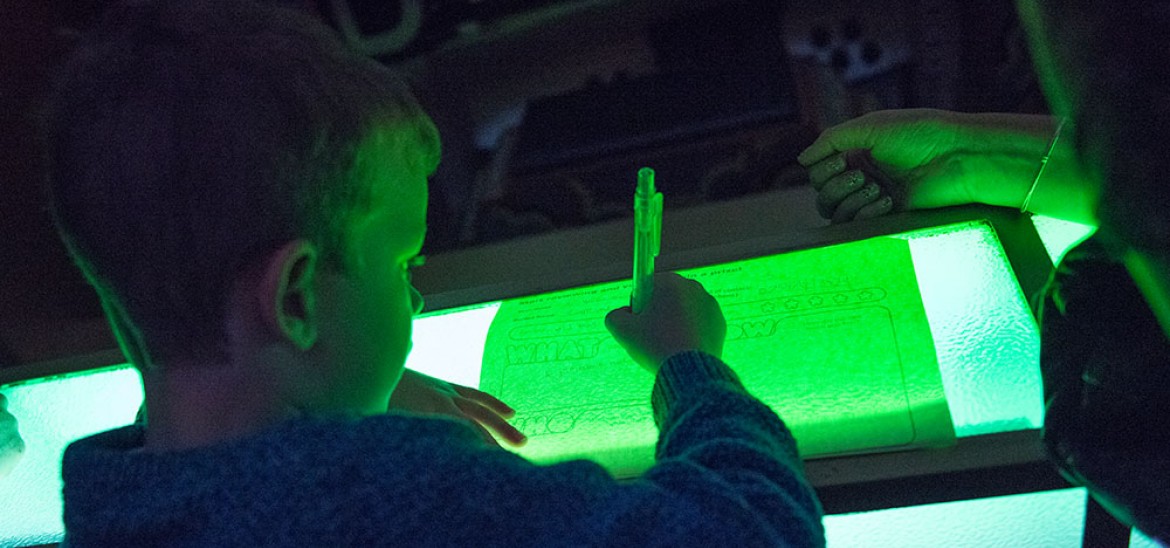Into Film Clubs
Find out everything you need to know about starting an Into Film Club.



I have never had a year where the children have been so enthused by what they are learning about in English
Liz Asten, Greengates Primary School, Bradford.
Over the past three years, we have been running the Bradford Media Literacy project to see if there is a link between using film in literacy lessons and academic attainment, and to prove that using film in the classroom engages pupils.
Over the course of the project our sample students gained an average of 4.28 points in writing and 4.15 in reading over a point higher than the three points progress students are expected to make over the course of a year. Time and again we heard how film has helped children to improve reading and writing in literacy across the curriculum. So why and how can this happen?
First of all, children love film. They have been watching it since they were babes in arms. There are different genres made for different age groups in different languages. Crucially many short films contain no language at all. Watching a film doesn't feel like working, but it can inspire children through rich imagery, use of camera shots, music, sound effects, silence and dialogue. Films provide rich opportunities for discussion. We can use evidence drawn from a film to explain what a character's thoughts and actions are or what they may do next. We also have endless opportunities to use films as a stimulus for any writing genre. We can write persuasively from a character's point of view, write the next paragraph after watching a scene, create a news report, and write poetry describing a setting from a still of a film. The list is endless.
This is not to say that films are a substitute for written texts, but using the two in conjunction can provide excellent learning outcomes. There are a huge number of books that have been made into films I've found Oliver Twist, How To Train Your Dragon and The Invention of Hugo Cabret to be three of the most successful. This provides teachers and children with the chance to compare settings, events and characters in books and films. There are opportunities to compare scenes with paragraphs and even shots with sentences.
In our initial training Mark Reid, Head of Education at the BFI, stressed the importance of short films. Most of our work involves watching very short sections of a film but classes can watch an entire short film in a lesson, more than once if necessary. Short films are unlikely to have been seen before by children and represent cultures from all around the world. Mark also pointed out that many films are created to be viewed at international film festivals where different languages are spoken, and so many eschew dialogue altogether. This means the films are packed with opportunities for children to deduce characters feelings, thoughts and motives based on their gestures and actions. The resources many teachers already use for developing recall and inference in written texts can easily be applied to film. These include role on the wall, decision wheel, axis of emotion, tell me grids, Venn diagrams and many more.
Just like a book, a text gives children the opportunity to be immersed in and inspired by a story. Children have been left on the edge of the seats when a film is paused at a crucial moment. This inspires them to persuade, predict, describe in the tasks that follow.
In the English National Curriculum pupils have to sit tests on spelling, punctuation and grammar. Film allows us to teach grammar in a context. We can play a scene in a film and use it as a stimulus for writing tenses, creating clauses, statements, commands or questions and so on. Our teachers also worked together to create SPAG tests based around films. This means the children can draw on the story to place the grammar in context.
We also see filmmaking as an important part of the process. Rather than creating long, polished films we tend to use filmmaking as a full class activity. We also create very short films that often don't last much longer than a minute. Sentence filming is an easy way into filming with a class. Write a sentence that picks up your focus for the lesson and then film it. Our latest work involves filming a sentence with a relative clause in two shots.
Each of the teachers involved in the project wrote case studies highlighting individual stories of progress and attainment, sharing the sequences of activities they created and also the effect that using film had on the children. One commonality between all of them is this: once you start using film to complement written text, there is simply no going back.
Viewing 4 of 4 related items.

Find out more about our streaming service, designed specifically for UK schools.